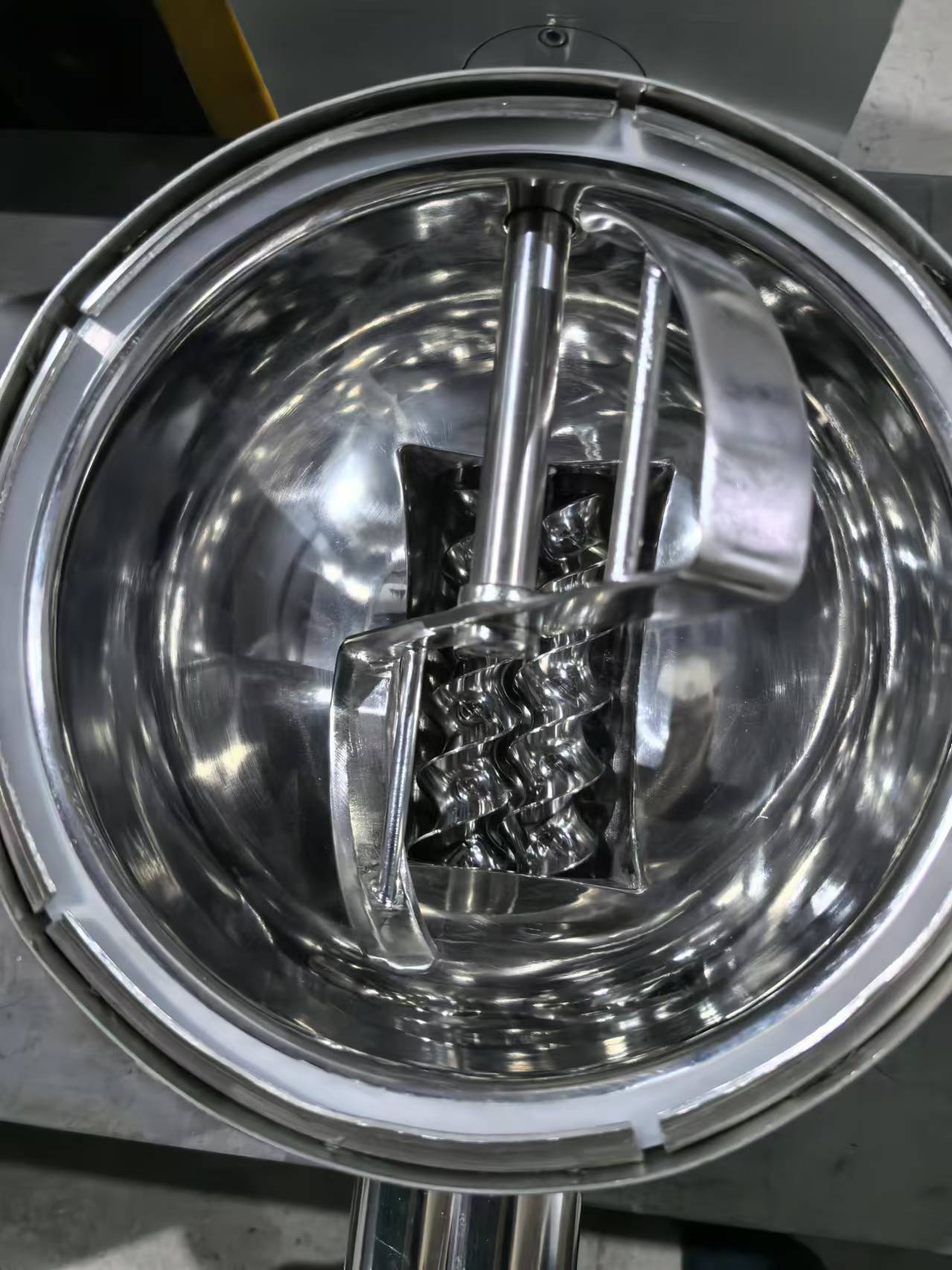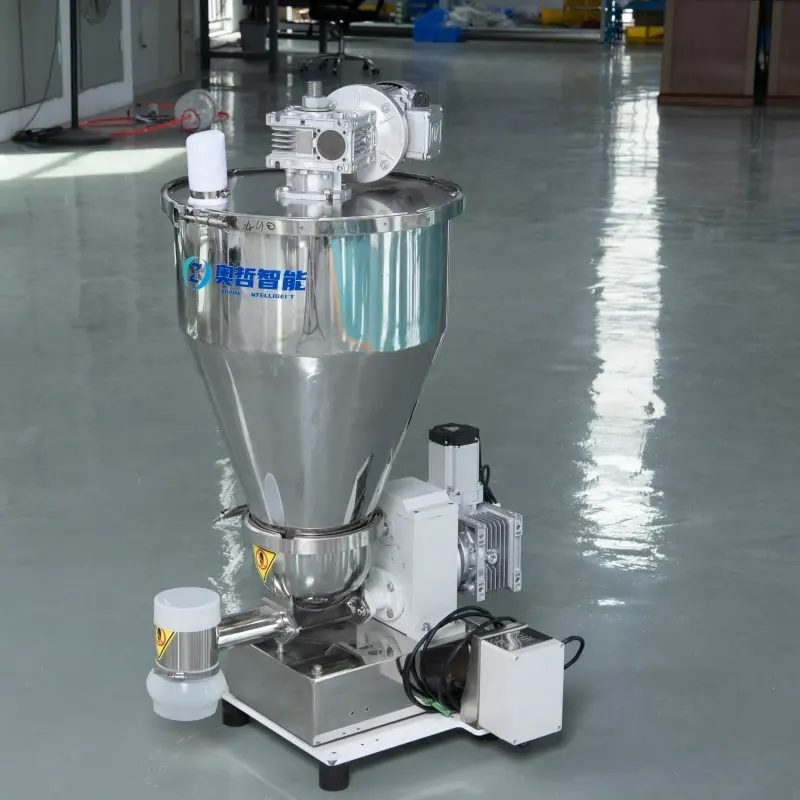Tipps zur Energieeffizienz für Einzelschnecken-Differenzialdosierwaagen
Veröffentlichungszeit: 2025-10-11
Inhaltsverzeichnis
Einzelschnecken-Differenzialdosierer werden häufig in Branchen wie der Lebensmittelverarbeitung, der Chemie- und Kunststoffindustrie für eine präzise und gleichmäßige Materialzufuhr eingesetzt. Obwohl sie bereits effizient sind, kann die Optimierung ihres Energieverbrauchs dazu beitragen, die Betriebskosten zu senken und die Nachhaltigkeit zu verbessern. Hier finden Sie einige praktische Tipps, um Ihre Einschnecken-Differentialdosierwaage energieeffizienter zu gestalten.
1. Wählen Sie die richtige Schraubengröße und Geschwindigkeit
Schneckengröße und Drehzahl wirken sich direkt auf den Energieverbrauch des Förderers aus. Die Verwendung einer zu großen Schnecke oder der Betrieb mit unnötig hoher Drehzahl kann Energieverschwendung verursachen. Wählen Sie Schneckendurchmesser und -steigung entsprechend Ihren Materialflussanforderungen. Passen Sie die Drehzahl an, um eine gleichmäßige Förderung zu gewährleisten, ohne den Motor zu überlasten.
2. Regelmäßige Wartung
Ein gut gewarteter Futterautomat verbraucht weniger Energie. Staub, Rückstände oder Verschleiß an Schnecke und Trog können die Reibung erhöhen und den Motor stärker belasten. Reinigen und überprüfen Sie Ihren Futterautomaten regelmäßig auf Verschleißerscheinungen oder Verstopfungen. Schmieren Sie bewegliche Teile bei Bedarf und ersetzen Sie verschlissene Komponenten umgehend. Eine ordnungsgemäße Wartung sorgt für einen reibungslosen Betrieb und einen geringeren Energieverbrauch.
3. Materialfluss optimieren
Dosierer arbeiten am effizientesten, wenn das Material gleichmäßig fließt. Vermeiden Sie plötzliche Änderungen der Materialeigenschaften oder des Feuchtigkeitsgehalts, da diese zu Förderunterbrechungen oder Verstopfungen führen können. Der Einsatz von Vorkonditionierungsgeräten oder Sieben zur Gewährleistung einer gleichmäßigen Materialgröße kann die Energieeffizienz verbessern und die Belastung des Dosiermotors reduzieren.
4. Verwenden Sie erweiterte Steuerungssysteme
Modern Einzelschnecken-Differenzialdosiersystem können mit fortschrittlichen Steuerungssystemen ausgestattet werden, die die Förderleistung und Motorlast in Echtzeit überwachen. Durch die automatische Geschwindigkeitsanpassung an den tatsächlichen Bedarf reduzieren diese Systeme unnötigen Energieverbrauch und gewährleisten gleichzeitig eine präzise Fördergenauigkeit.
5. Leerlauf minimieren
Läuft der Feeder mit voller Geschwindigkeit, während kein Material verarbeitet wird, verschwendet er Energie. Automatische Start-/Stopp-Funktionen oder die Integration von Produktionsliniensensoren stellen sicher, dass der Feeder nur bei Bedarf läuft. Dieser einfache Schritt kann langfristig zu erheblichen Energieeinsparungen führen.
6. Wählen Sie energieeffiziente Motoren
Wählen Sie nach Möglichkeit Motoren mit hohem Wirkungsgrad. Moderne energieeffiziente Motoren verbrauchen weniger Strom, erzeugen weniger Wärme und erfordern oft weniger Wartung. Daher eignen sie sich ideal für den Dauerbetrieb in industriellen Umgebungen.
Abschluss
Energieeffizienz bedeutet nicht nur Kostensenkung – sie unterstützt auch eine nachhaltige Produktion und verlängert die Lebensdauer Ihrer Anlagen. Durch die Wahl der richtigen Schneckengröße, die Wartung Ihres Förderers, die Optimierung des Materialflusses, den Einsatz moderner Steuerungen, die Minimierung von Leerlaufzeiten und die Wahl energieeffizienter Motoren können Sie Ihre Mikro-Einzelschnecken-Differenzialdosierer effizienter, zuverlässiger und kostengünstiger.
Die Optimierung des Energieverbrauchs ist eine kluge Investition, die sowohl Ihrem Geschäftsergebnis als auch der Umwelt zugutekommt, indem sie zu einem reibungslosen Ablauf Ihres Betriebs beiträgt und gleichzeitig Geld spart.


